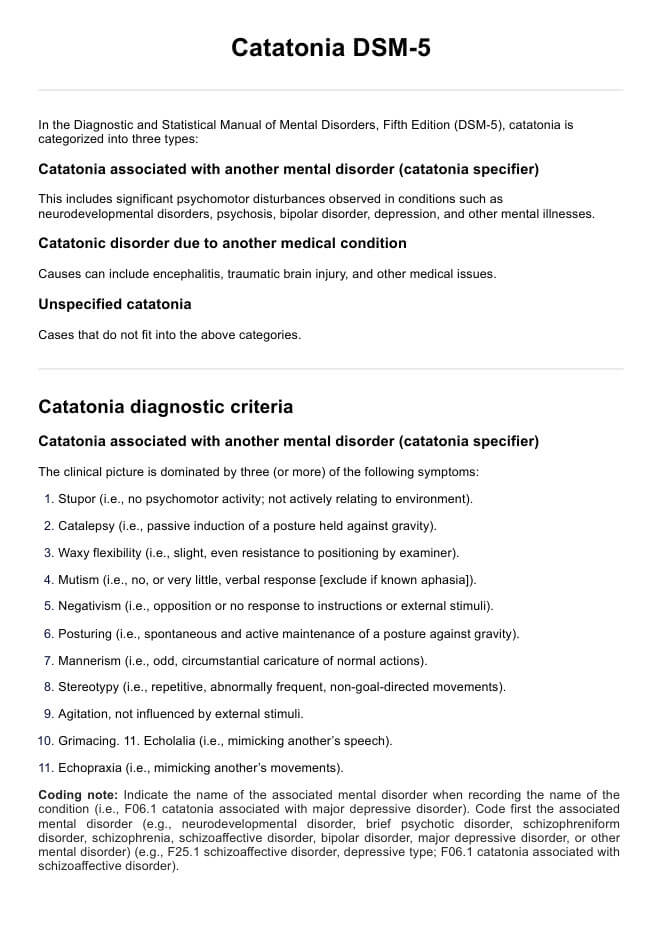Catatonic syndrome refers to a cluster of movement abnormalities and behavioral dysfunctions characterized by symptoms such as immobility, mutism, negativism, and posturing. It can be associated with various psychiatric and medical conditions, including schizophrenia, mood disorders, and neurological diseases.

Catatonia DSM-5
Learn about catatonia, a neuropsychiatric disorder characterized by abnormal movements and behavior. Find out how it is diagnosed using the DSM-5.
Catatonia DSM-5 Template
Commonly asked questions
Treating catatonia typically involves the use of medications such as benzodiazepines or electroconvulsive therapy (ECT). Benzodiazepines can help alleviate symptoms by enhancing the effect of neurotransmitters in the brain, while ECT can be particularly effective for severe cases.
Chronic catatonia is a prolonged state of catatonic symptoms that persists over weeks, months, or even years. It may require long-term management strategies, including regular psychiatric support, medication adjustments, and ongoing therapeutic interventions.
EHR and practice management software
Get started for free
*No credit card required
Free
$0/usd
Unlimited clients
Telehealth
1GB of storage
Client portal text
Automated billing and online payments











